腾讯云域名申请+ssl证书申请+springboot配置https
阿里云域名申请
域名申请比较简单,使用微信注册阿里云账号并登陆,点击产品,选择域名注册

输入你想注册的域名
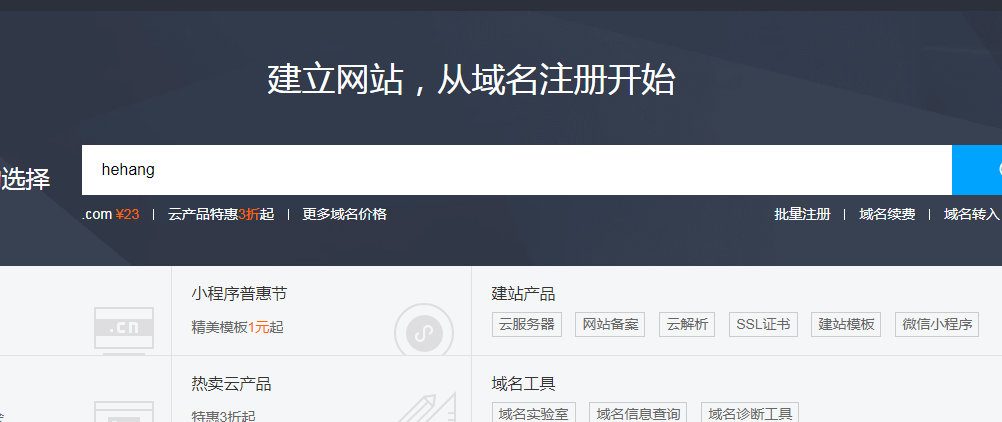
进入域名购买页面,搜索可用的后缀及价格,越热门的后缀(.com,.cn)越贵一般,并且很可能已经被注册。
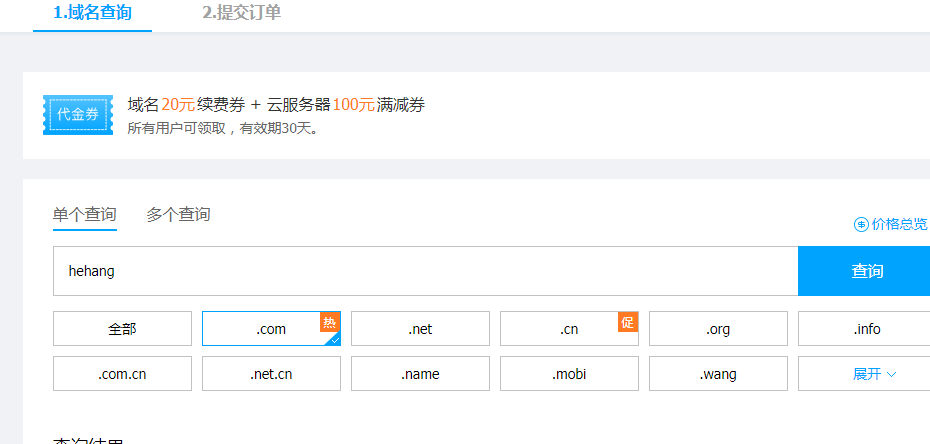
最后,付款购买即可。
申请ssl证书
还是进入首页,点击产品按钮,在下拉菜单中选择ssl证书,进入后点立即购买,在下图中做如下选择
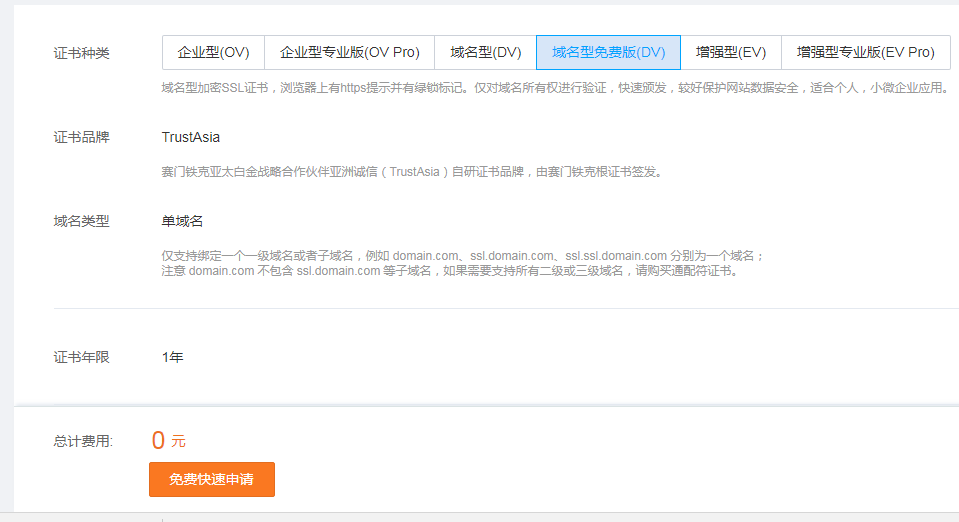
ssl证书是要与域名绑定的,按要求填好域名和邮箱,密码可以不填
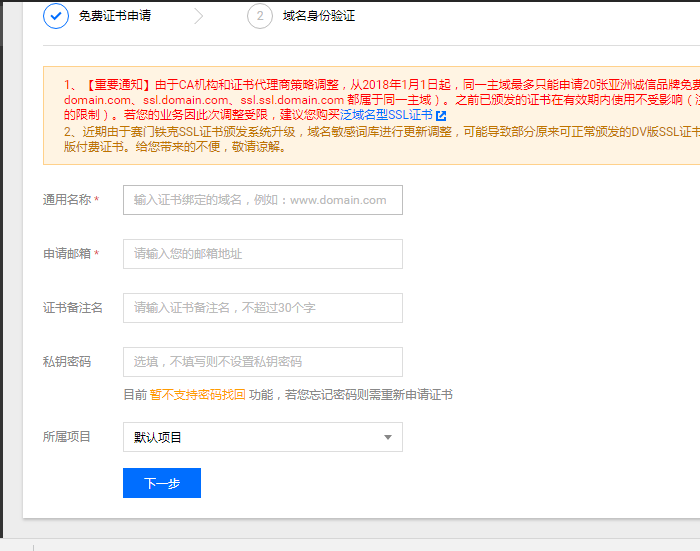
填写好,选择下一步,然后选择手动dns,提交,然后查看证书详情。
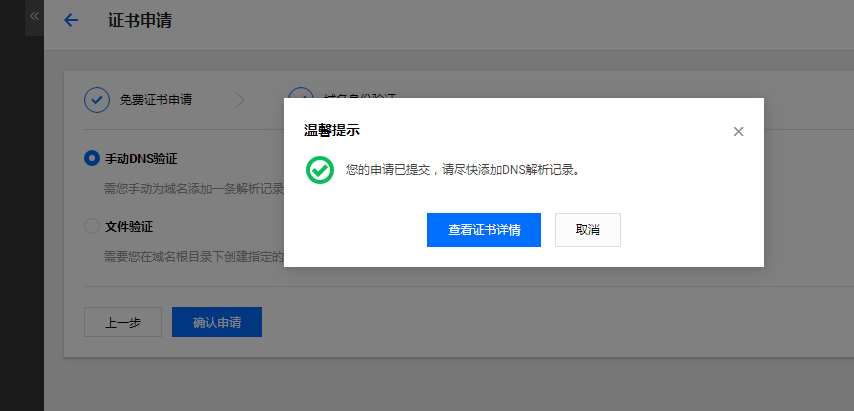

进入域名解析页面,找到你刚创建的域名,点击解析,添加上面的记录

稍等1分钟,审核就会通过,然后就可以下载ssl证书,加压后有对应nginx、tomcat、apache等的证书,我们配置springboot,所以选择tomcat。
springboot配置https
新建一个springboot项目,加入web模块,将我们的证书copy到resrouce目录下,同时在application.yml中添加如下配置。
server: port: 443 ssl: enabled: true key-store-password: o7yp31t85gu key-store: classpath:hehang.xyz.jks key-store-type: JKS condition: http2https: true http: port: 80
修改启动器,使其支持将http请求自动转化为https请求
package io.powerx; import org.apache.catalina.Context; import org.apache.catalina.connector.Connector; import org.apache.tomcat.util.descriptor.web.SecurityCollection; import org.apache.tomcat.util.descriptor.web.SecurityConstraint; import org.springframework.beans.factory.annotation.Value; import org.springframework.boot.SpringApplication; import org.springframework.boot.autoconfigure.SpringBootApplication; import org.springframework.boot.autoconfigure.condition.ConditionalOnProperty; import org.springframework.boot.web.embedded.tomcat.TomcatServletWebServerFactory; import org.springframework.context.annotation.Bean; @SpringBootApplication public class TestsslApplication { public static void main(String[] args) { SpringApplication.run(TestsslApplication.class, args); } // 如果没有使用默认值80 @Value("${http.port:80}") Integer httpPort; // 正常启用的https端口 如443 @Value("${server.port}") Integer httpsPort; // springboot2 写法 @Bean @ConditionalOnProperty(name = "condition.http2https", havingValue = "true", matchIfMissing = false) public TomcatServletWebServerFactory servletContainer() { TomcatServletWebServerFactory tomcat = new TomcatServletWebServerFactory() { @Override protected void postProcessContext(Context context) { SecurityConstraint constraint = new SecurityConstraint(); constraint.setUserConstraint("CONFIDENTIAL"); SecurityCollection collection = new SecurityCollection(); collection.addPattern("/*"); constraint.addCollection(collection); context.addConstraint(constraint); } }; tomcat.addAdditionalTomcatConnectors(httpConnector()); return tomcat; } @Bean @ConditionalOnProperty(name = "condition.http2https", havingValue = "true", matchIfMissing = false) public Connector httpConnector() { System.out.println("启用http转https协议,http端口:" + this.httpPort + ",https端口:" + this.httpsPort); Connector connector = new Connector("org.apache.coyote.http11.Http11NioProtocol"); connector.setScheme("http"); // Connector监听的http的端口号 connector.setPort(httpPort); connector.setSecure(false); // 监听到http的端口号后转向到的https的端口号 connector.setRedirectPort(httpsPort); return connector; } }
最后也是最重要的,如果你使用的是云服务器,那么只需要在腾讯云平台配置下域名解析(选择快速添加网站,配置云服务器的公网ip,按照提示添加下面两条记录),注意配置安全组,开放80和443端口,然后将项目打包部署到云服务器上即可。

如果你是在本地服务器部署,则首先需要进行外网映射配置,我这里就是将我要部署的服务器映射到公网ip的1234端口(也想用80端口,无奈没有开通),然后再去腾讯云配置域名解析,最后部署即可,贴上我的安全标示,哈哈




 浙公网安备 33010602011771号
浙公网安备 33010602011771号